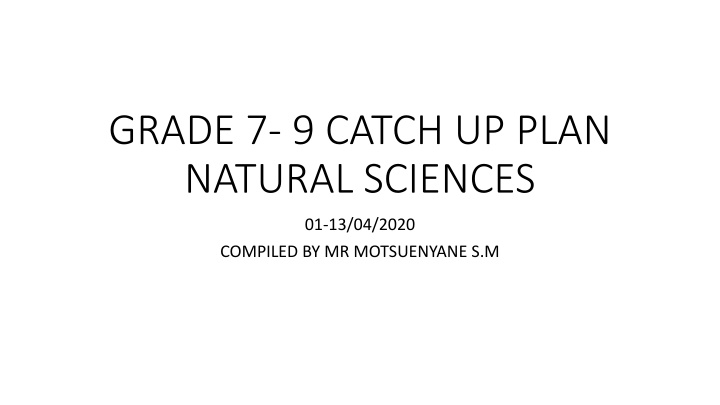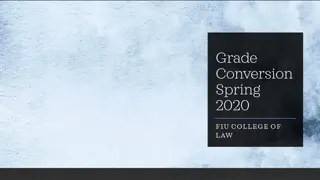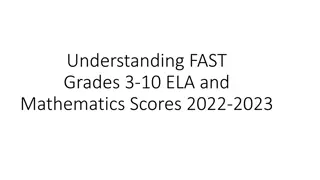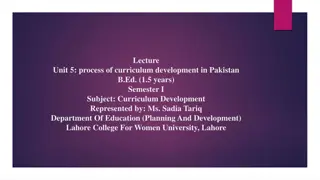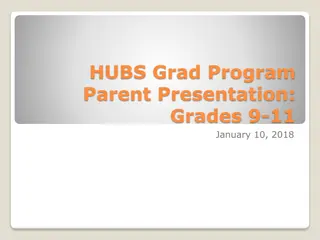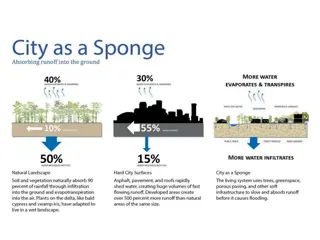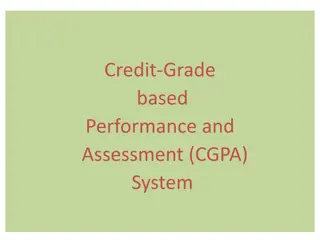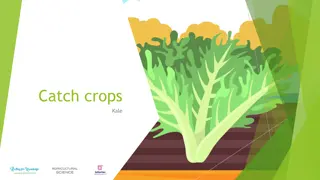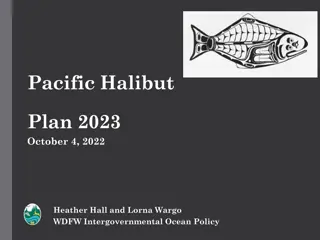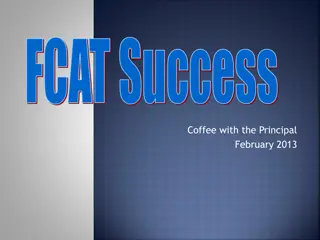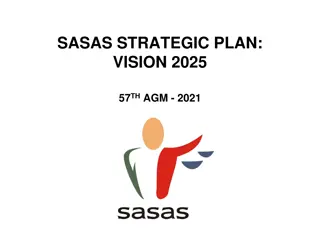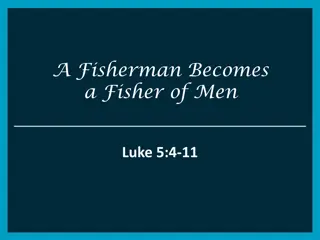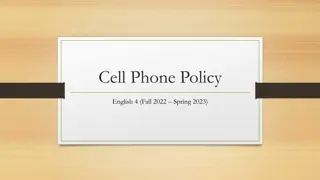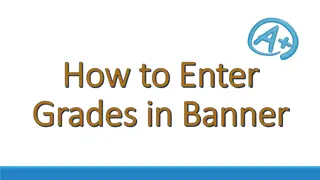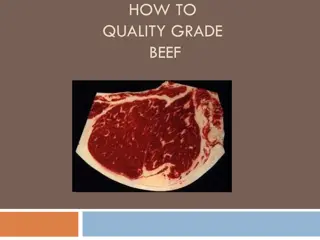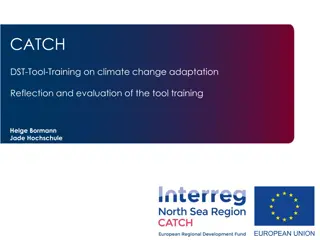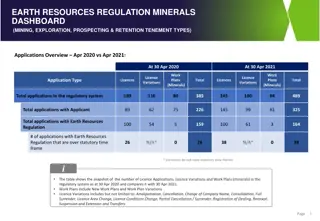Science Catch-Up Plan for Grades 7-9: April 2020
Explore a comprehensive catch-up plan for grades 7-9 in natural sciences compiled by Mr. Motsuenyane. The plan covers topics such as physical properties of materials, conducting experiments on strength, flexibility, boiling and melting points, conductivity, and environmental impacts. Grade 8 focuses on atoms as the building blocks of matter, including making models of atoms and learning about subatomic particles.
Download Presentation

Please find below an Image/Link to download the presentation.
The content on the website is provided AS IS for your information and personal use only. It may not be sold, licensed, or shared on other websites without obtaining consent from the author.If you encounter any issues during the download, it is possible that the publisher has removed the file from their server.
You are allowed to download the files provided on this website for personal or commercial use, subject to the condition that they are used lawfully. All files are the property of their respective owners.
The content on the website is provided AS IS for your information and personal use only. It may not be sold, licensed, or shared on other websites without obtaining consent from the author.
E N D
Presentation Transcript
GRADE 7- 9 CATCH UP PLAN NATURAL SCIENCES 01-13/04/2020 COMPILED BY MR MOTSUENYANE S.M
GRADE 7 DATE CONTENT AND CONCEPT Physical properties of materials properties of materials determine their suitability for a particular use such as: (refer to Grade 5 Energy & Change) -- strength ACTIVITY investigating and comparing the strength of selected materials [by dropping weights onto, or hanging weights on materials such as different shopping bags, aluminium foil, newspaper, photocopier/printer paper, plastic wrap, wax paper] 01/04/2020 02/04/2020 --flexibility Investigate flexibility of different material, sag of Perspex ruler and wooden ruler 03/04/2020 --boiling and melting points Investigate different materials, wooden spoon plastic, stainless steel spoon for electrical and heat conductivity
Grade 7 continues CONTENT AND CONCEPT DATE ACTIVITY 06/04/2020 Electrical conductivity Investigate different material whether they transfer electricity or not 07/04/2020 Heat conductivity Investigate different material whether they transfer heat or not 08/04/2020 Impact on the environment the production and/or use of materials such as metals, plastics and fuels has an impact on the environment reading and writing about how a material such as a metal or plastic or fuel is produced and its impact on the environment 09/04/2020 Classwork/homework
Grade 8 DATE CONTENT AND CONCEPT Atoms building blocks of matter all matter is made up of tiny particles called atoms an element is made up of atoms of the same kind. For example all the atoms of an element, such as copper, are identical an element is a substance that cannot be broken down into two or more substances by chemical means (An element cannot be changed into another element by means of a chemical reaction) atoms of one element differ from the atoms of all other elements all known elements are listed on the Periodic Table of the Elements ACTIVITY 01/04/2020 making a 2-dimensional model or drawing of an atom (choose an element from the first 20 elements from the Periodic Table) [Use beads or dried lentils or dried peas pasted with glue onto a paper plate, to make a basic model of an atom of a selected element. Show protons and neutrons making up the nucleus, and electrons in the space around the nucleus]
Grade 8 DATE CONTENT AND CONCEPT ACTIVITY 02/04/2020 Sub atomic particles atoms are made up of smaller sub-atomic particles (protons, neutrons and electrons) the central region of the atom is called the nucleus the nucleus is made up of positively charged particles called protons and neutral particles called neutrons negatively charged particles called electrons move around the nucleus atoms are neutral because the number of negatively charged particles (electrons) is equal to the number of positively charged particles (protons) 03/04/2020 Pure substances elements and compounds are pure substances Elements an element is a material that consists of atoms of only one kind, such as hydrogen (H), oxygen (O), carbon (C), sodium(Na) and chlorine (Cl) all known elements are listed on the Periodic Table of Elements. They are limited in number and are the building blocks of millions of compounds some elements on the Periodic Table of Elements form diatomic molecules for example hydrogen (H2), nitrogen (N2), oxygen (O2), chlorine (Cl2). These are called molecules of elements sometimes atoms react together chemically to form molecules of compounds (such as H2O, CO2) making models showing the atoms which make up molecules (such as O2, H2, N2, H2O, CO2), using plastic popit beads or modelling clay or playdough
Grade 8 continues DATE CONTENT AND CONCEPT ACTIVITY 04- 09/04/2020 Compounds a compound is a material that consists of atoms of two or more different elements chemically bonded together, such as water (H2O), carbon dioxide (CO2), salt (NaCl) the atoms in a given compound are always combined/bonded in a fixed ratio such as, in water, where the ratio is always two hydrogen atoms (H) to one oxygen atom (O) a chemical bond is the force that holds atoms together compounds [such as water (H2O), carbon dioxide (CO2), salt (NaCl)] are formed by chemical reactions compounds can be broken down in a decomposition reaction into other compounds or their original elements by heating or electrolysis. For example, electrolysis decomposes water (H2O) to form hydrogen (H2) and oxygen (O2) investigating and recording observations of how a compound can be broken down into elements by Electrolysis Homework and reading material ( page 31-33)
Grade 9 DATE CONTENT AND CONCEPT ACTIVITY 01/04/2020 Briefly review and revise concepts dealt with in Grade 8, focusing on compounds The Periodic Table [Note: use the Periodic Table of Elements as a reference tool in the topics that follow] the elements can be classified into metals, non-metals and semi metals the elements found in groups (vertical columns) have similar chemical properties each element on the Periodic Table (in its own block) has an atomic number (smaller number), mass number (larger number), name and symbol a formula/e is ratio of the symbols of the elements and number of atoms for each symbol in a compound Names of compounds many compounds are named according to their elements, such as sodium chloride (table salt) which is made of the elements sodium and chlorine. But others have common names such as water and ammonia
Grade 9 DATE 02/04/2020 some compounds have names such as carbon monoxide CO, carbon dioxide CO2, sulfur trioxide SO3. In these compounds: -- monoxide- tells us that one oxygen atom has combined with the carbon atom -- dioxide- tells us that two oxygen atoms have combined with the carbon atom -- trioxide- tells us that three oxygen atoms have combined with the sulfur atom CONTENT AND CONCEPT ACTIVITY making models (using beads, beans or plasticine or playdough) of several elements and compounds. Including: water (H2O), oxygen (O2), carbon monoxide (CO), carbon dioxide (CO2), copper oxide (CuO), sodium chloride (NaCl), sulfur trioxide (SO3) [Note: the latest internationally accepted spelling is now sulfur not sulphur]
Grade 9 DATE CONTENT AND CONCEPT Chemical equations to represent reactions chemical reactions can be represented with models chemical reactions are usually represented with symbols such as in chemical equations: For example: -- C+O2 CO2 -- 2H2+O2 2H2O the subscript number indicates the number of atoms of an element found in the formula the numbers in front of the compounds indicate the ratio in which the molecules react. For example two molecules of hydrogen react with one molecule of oxygen to form water, therefore the ratio is 2:1 (H:O) no atoms are lost or gained in the reaction, they are simply rearranged ACTIVITY naming, writing symbols, and drawing pictures or making models (using beads, beans or plasticine or playdough) of the chemical reactions: -- C+O2 CO2 -- 2H2+O2 2H2O [make models of the reactants and rearrange the atoms to show how the products are formed] 03-09/04/2020
